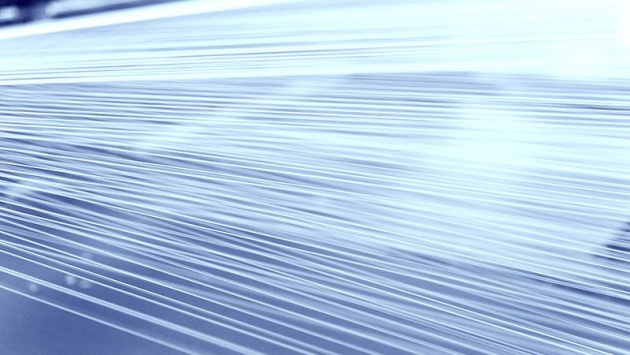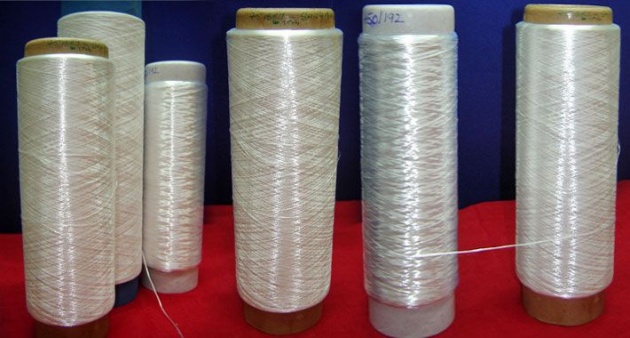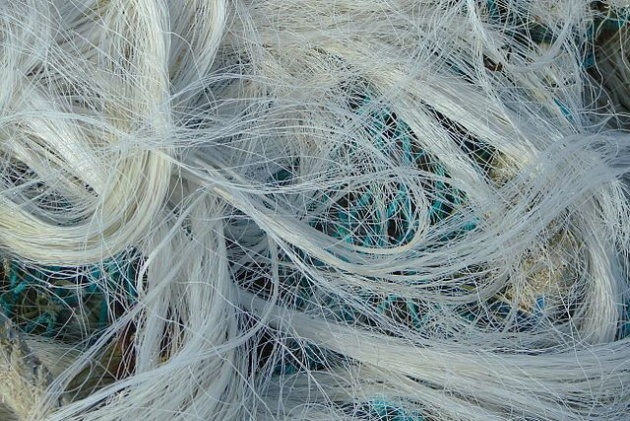1.5.8 Synthetic fiber:
Synthetic Fibers are prepared by joining small manufactured polymers. The chemicals extracted from petroleum or petro chemicals are utilized for production of compounds which are used in production of such fibers. While several types of fiber build on simulated polymers exist appraise as potentially significant for profit products, these four - acrylic, nylon polyolefin and polyester take over the market. The part of only polyester is more then 60 percent of total artificial fiber production and part of all four is nearly 98%. The scope of staple polyester fiber is much broad. In textile industry of Pakistan the synthetic fiber not only creates its big demand but also steps forward its production. The blended yarn prepared by this sector used in production of cloth and garments etc. Annual capability is 636,000 tons which is used in manufacturing of curtains, cloth and garments. In different sectors of textile industry Pakistan is manufacturing Art silk, Filament Yarn, synthetic fiber. Jute and woolen sectors are also the part of Pakistan’s textile working under all Pakistan textile mills association.

1.5.9 Filament yarn:
Filament yarn or metallic thread consists of very fine metallic thread moreover number of strand together only cluster jointly. Closely massed monofilaments are normally utilized for manufacturing purposes instead fabric fabrication or adornment. To manufacture silk type affects natural silk also uses in filament yarn. Within the duration of 5th five year plan as the demand of artificial filament yarn raised upward the production of synthetic yarn filament industry picked a good momentum to upward and consequently importation rose up and in growing marketplace situations the permeation for reasonable investment was granted to fulfill market requirements. Now the units working locally in filament yarn are producing three types of filament yarn:
(1) Acetate Rayon yarn
(2) polyester filament yarn

(3) Nylon filament yarn

Respectively 1, 21 and 3 units are working in this department and there capacity is respectively 3000(M tons) 105376(M tons) 2000 (M tons).
1.5.10 Art silk:
Art silk is a terminology used in textile sector for artificial synthetic silk. It’s nothing just similar like rayon. Synthetic artificial rayon art silk is a hybrid type of silk prepared by synthetic wavering industry. The art silk is just same like real silk but the cost of production is low then real silk. With the passage of time this artificial production industry has organized and builds up on the bases of small production houses. Power looms organization having 8 to 12 looms smooth out in every part of country. Around about there are 90,000 power looms functioning from which 30,000 are for in production of blended yarn. And other 60,000 are working on filament yarn. There are some units which are ready for work at the time of demand called mobile power looms. A big strength is working in textile hub Faisalabad similarly some units in other cities like Karachi in sindh, Gujranwala, Jalalpur Jattan in Punjab and in some backward areas like in KPK Khyber Agency, Bare, Waziristan, and Swat.
1.5.11 Woolen:
Woolen knitting industry is working on cottage bases at small scale. Woolen cloths are its major product. Woolen embroidery at cottage bases is fantastic in Pakistan. In woolen industry the production of woolen yarn is 6.864 M.kgs. 6.960 M.kgs and 3,445 (M.sq.meter), is the production of respectively in Acrylic yarn and Fabrics. The manufacturing of Shawls, Blanket and Carpet is respectively 13.353 Million, 657,235 and 3.5 (M. Sq. meter).
1.5.12 Jute:
At the time of beginning in 1947 the jute industry was the one of major industry in Pakistan due to the production abundance of jute in Bengal East Pakistan’s very well-known golden fiber used for ropes, mats, gunny bags, etc. but after 1972 the sector does not make any major progress due to separation of East Pakistan as Bangladesh. In 2009-10 Pakistan produce a big quantity 98,753 metric tone of jute products by an aggressive increase of 6.6%. Sack cloth jute bags are mainly used in packing’s of different agricultural products like wheat, rice, fruits, vegetables and grains.
1.5.13 Canvas & Tents:
This is one of the most important products of textile industry. Tents and canvas are required every for making shad under the open sky for any emergency or urgent use any time emergency shad can prepare within few minutes. Mostly at the time of earthquake flood and natural calamities for army field campus security Forces and food department campus these are used locally. This sector utilizes a peak quantity of raw cotton. In this sector the capacity of manufacturing is greater than 100 million Sq. Meters. 40% of its production is for the purpose of domestic use and remaining 60% for export. This worth addition sector has a big potential in favor of export. Pakistan produces tents and canvas at cheapest rates source and export at compatibly low rate.
1.6 Contribution of textile in economy of Pakistan:
After the independence of Pakistan, Pakistan textile industry sector developed to a great extent and while the presence of many problems this sector fulfill the time needs at a large scale further due to its extent development this sector become the backbone of economy of Pakistan. This reality can without doubt be getting the picture by simple glimpse at the assistance of textile sector made the Pakistan economy as a complete. The development made by any sector of country can easily feel in many other attached sectors. Similarly implications of textile development can felt in case of textile industry. At this point, the conversation is narrow around the contributions and the effects of growth of Pakistan Textile sector to Economy of Pakistan.
1.6.1 Export:
Pakistan is currently 8th largest exporter of textile products in world. Contribution of Pakistan textile industry in export development fund is Rs. 2.5 billion. The total export of Pakistan textile products is around 12.5 billion in us dollars. Textile export is 53.2 percent of its total export and 46% of its total manufacturing. Share of Pakistan in world trade is less than one percent and the world textile trades total annual volume is 18 trillion US dollar. Three percent of U.S. textile needed imports from Pakistan. Second major importer of Pakistani textile cotton yarn is China. Sweden, Australia, Gulf region, EU, Hong Kong, Italy, UK, Japan, Saudi Arabia, Canada, Korea, Turkey, Norway, Germany and France are other big costumers of Pakistani textile products. Below is the figure that highlights the total textile products exported during 2009 -2010. Knitwear, tablecloth, cloth and scarf bed-sheets are major export to market of UK and UE is main customer in this type. Germany is another next large market of ready-made cloth and garments that imports from us mainly and the next one is Italy in cotton and cotton cloth. Along with countries of Scandinavian, the products of textile like garments are exported to Denmark and Denmark import all items in a small quantity from Pakistan.
Pakistan is one of top ten exporter of textile in the world. Export volume of Pakistan’s textile industry is 10313.2million US dollar with these 20 major countries. Garments has about 9-10 percent share in total textile export but has zero share in high standard sports kits brands. In this sector export is about 50 millions of dollars. Chain imports cotton yarn of 1.527 billion of dollar from Pakistan. China and Hong Kong are the main importer of Pakistani cotton yarn. During the fiscal year 2011-12 the export of yarn from Pakistan to china was more then 12.4% or approximately 4.6 billion in us dollars. During the same fiscal year the export of textile products from Pakistan to US was 2.98% the amount of which is approximately 2.98 billion in us dollars. During the fiscal year 2011-12 the export of textile manufactured goods from Pakistan to German was 1.6% or amounted 0.88 billion in us dollars. Similarly a small amount of 0.7% of Indian textile imports was exported by Pakistan the account of which is 0.888 billion us dollars. An increase in import of basic textile products by china from neighboring countries especially increase import from Pakistan is a life line for domestic textile industry.
1.6.2 Imports:
Pakistan has not its own engineering and did not have any domestic textile machinery. The machinery installed in textile mills, was imported from abroad. Still Pakistan imports textile machinery from Germany. Pakistan also imports machinery from Japan, Switzerland, China and Belgium.
1.6.3 Employment:
Other then the performance of textile industry this sector has also a major part in employment of labor force. 17 million peoples are employed in this sector which is approximately 39% of total labor employed in country. With the passage of time after agriculture sector this sector is most important for reducing unemployment.



